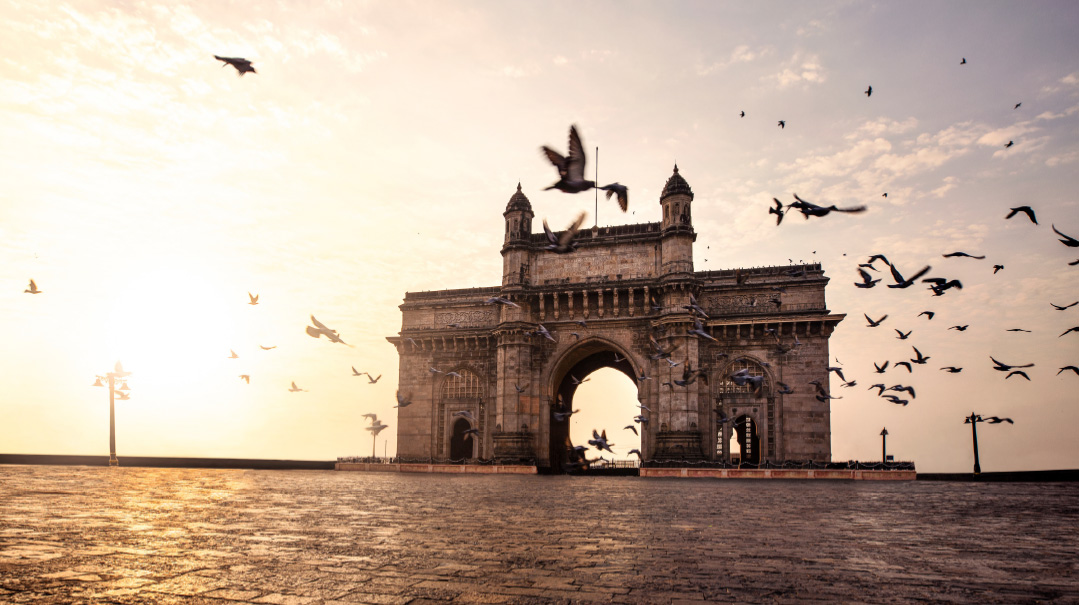City of Tears
| March 5, 2024A trip to Mumbai where the unthinkable happened

Photos: Moshe Klein
To Jews worldwide, Mumbai is a city whose tears are permanently engraved on our hearts, ever since the Chabad House terror attack of November 26, 2008. Known as Bombay until 1995, Mumbai is also a hub for India’s ancient Bene Israel community, making it a locale that globetrotting Moshe Klein had to see for himself.
Shalom, Mumbai
After having spent three days in Kolkata last winter, Moshe Klein was looking forward to a long weekend in Mumbai to gain a different perspective on India’s Jewish communities. While India has several states with Jewish populations, Mumbai was the destination that beckoned to Klein, and he timed his visit for the 15th yahrtzeit of the deadly massacre at the local Chabad House, in which Rabbi Gavriel and Rivky Holtzberg and four others were murdered.Klein headed straight from Mumbai’s main airport to the Magen David Synagogue, built in 1864 by Sir David Sassoon to meet the needs of the growing local Baghdadi Jewish community. As in other countries with significant Muslim minorities where Klein has traveled, the shul is located in a Muslim area, where the buildings’ distinctive architecture of spires and cusped arches is richly ornamented.
“History-wise, Jews get along better with their Muslim neighbors than anyone else,” explains Klein. “There is often a mutual respect.”
The shul was restored in 2011, its original yellow façade repainted a spectacular shade of light blue, a color used in several other local shuls as well. The compound where Magen David stands is home to two schools that once served the local Jewish community — the Eliza Ezra Ezekiel Sassoon High School, built in 1902, and the Sir Jacob Sassoon High School, founded in 1908. While both are still operating and run by a Jewish trust, their students have no connection to Klal Yisrael, a situation that evolved as Mumbai’s Jewish residents emigrated from the area. This reality echoes what Klein encountered in Kolkata, but he found Mumbai’s “Jewish” schools to have even less of a Jewish flavor than those he had seen just days earlier in eastern India.
The trip from the airport to the Magen David Synagogue normally takes 25 minutes by car, but Klein decided to travel the 18 miles by rickshaw, a decision that he admits wasn’t the best choice.
“Going by rickshaw definitely sounds cooler than it is,” says Klein. “It is bumpy and good for a local ride, but this took closer to an hour. I don’t remember the exact cost of the trip, but it was just a few dollars.”
After going without a minyan during his three days in Kolkata, Klein was happy to find more than a quorum in Mumbai, and he davened Shacharis with just over a dozen men. Most were elderly, including one man who approached with a tzedakah zekel and was clearly disappointed by Klein’s modest contribution. Klein held firm on his donation, but ended up giving an additional contribution so that he could take pictures in the shul.
“He told me that it would cost 500 rupees for me to take pictures,” recalls Klein. “He brought me an official photographer’s receipt, so I guess I wasn’t being scammed. If that’s how they sustain themselves, then so be it.”
While Magen David is clearly in need of the services of a good handyman (at the very least), it was hard not to be impressed by its stately architecture. The property is a compound of sorts, with on-site lodging for travelers, as well as a kitchen that functions as a restaurant. Klein declined an offer from the cook to make him anything he wanted for breakfast for $20, and chose to pass on the lodging as well, preferring to stick with a more updated hotel and whatever food he could scrape together on his own.
With its majestic air, Magen David almost felt out of place on the Jewish compound, situated amid chaotic streets teeming with noise and throngs of locals. Venturing a little farther, it was clear to Klein that the surrounding area had definitely seen better days.
“There were no sidewalks, and the kids were running around without shoes,” says Klein. “Because India is very densely populated, you have to push yourself through to get wherever you want. There are a lot of beggars, more than average, and there are always people on the streets trying to sell you things.”
Oops! We could not locate your form.







